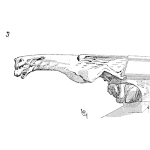
When working with a team creating a new system, I always ask, “what is the goal?” The answers often do not make much sense. The team using SMART reliability goals are astonishingly well-stated.
The difference that makes a goal, objective, or requirement practical and useful is summed up by SMART. A SMART goal is Specific, Measurable, Achievable, Relevant, and Time-bound. Let’s explore each element as related to a reliability goal.
[Read more…]













